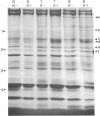Abstract
Membranes of erythrocytes infected with Plasmodium falciparum develop protrusions called “knobs.” These protrusions are not apparent on erythrocytes infected with young parasites (rings) but develop with the growth of parasites to the trophozoite and schizont stages. The nature and origin of knobs were characterized by comparing the stage-specific proteins of two culture lines of P. falciparum, K+ and K-. K+ parasites produce knobs; K- parasites do not. Erythrocytes infected with both types of parasites were labeled metabolically and samples were analyzed by electrophoresis in sodium dodecyl sulfate/polyacrylamide gels. There were no apparent differences in Coomassie blue-stained or radioactive components of rings of K+ and K- parasites. However, erythrocytes infected with K+ trophozoites or schizonts showed a major labeled protein, with an apparent molecular weight of ≈80,000, that was not present in any developmental stage of K- parasites or in K+ rings. A fraction enriched in membranes from erythrocytes infected with K+ trophozoites showed enrichment of this protein. The results indicate that this protein, synthesized by the parasites, is correlated with the formation of knobs on the host cell membrane. Two additional labeled components were identified. These appeared with the development of schizonts in both K+ and K- parasites and are therefore stage-dependent and not correlated with knobs.
Keywords: malaria
Full text
PDF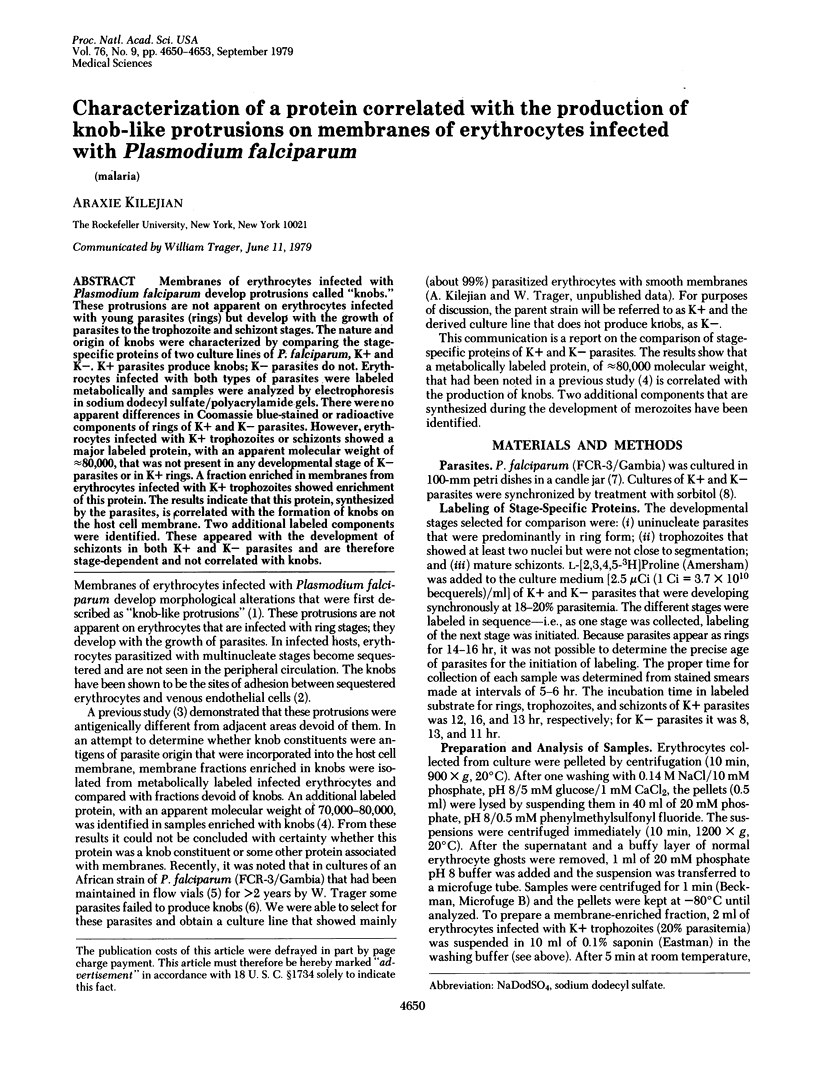
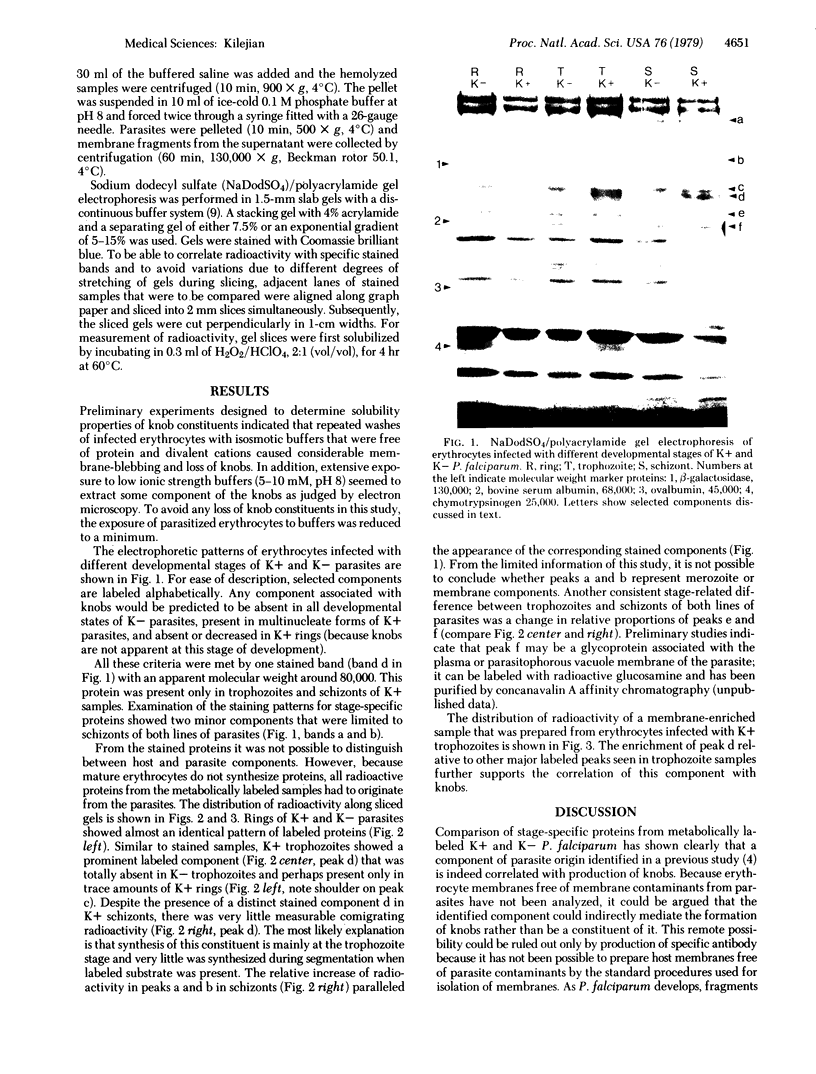
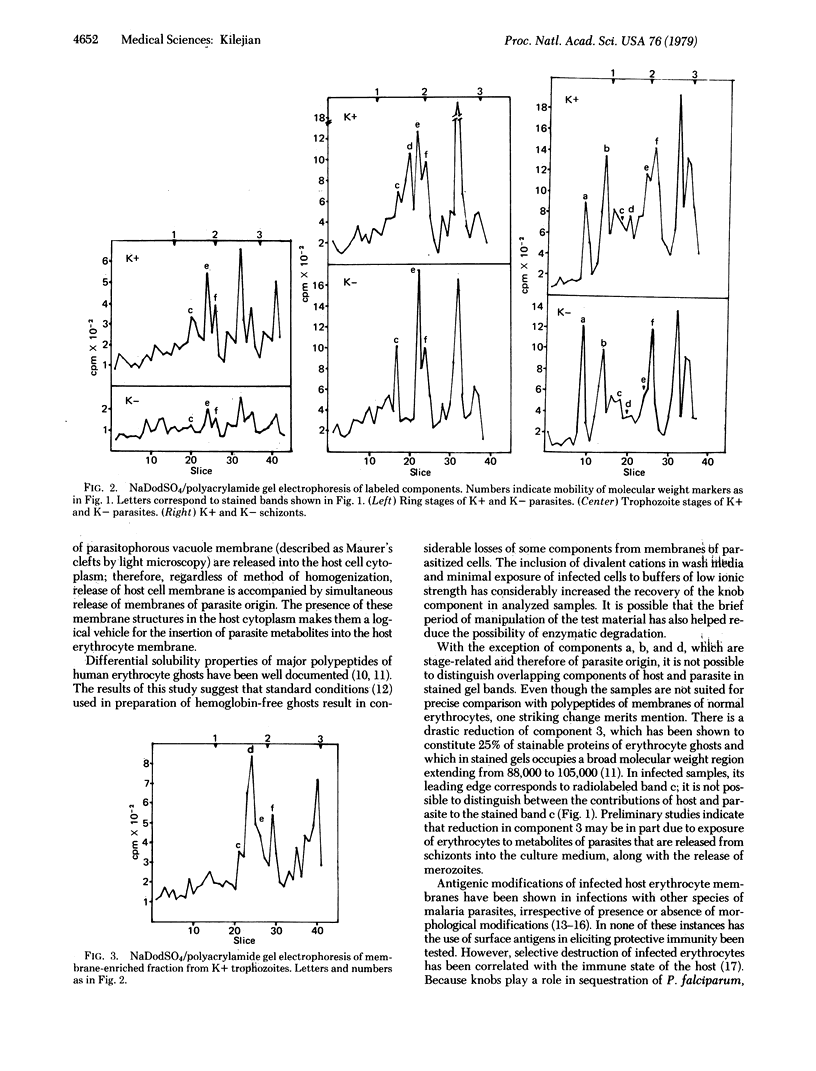
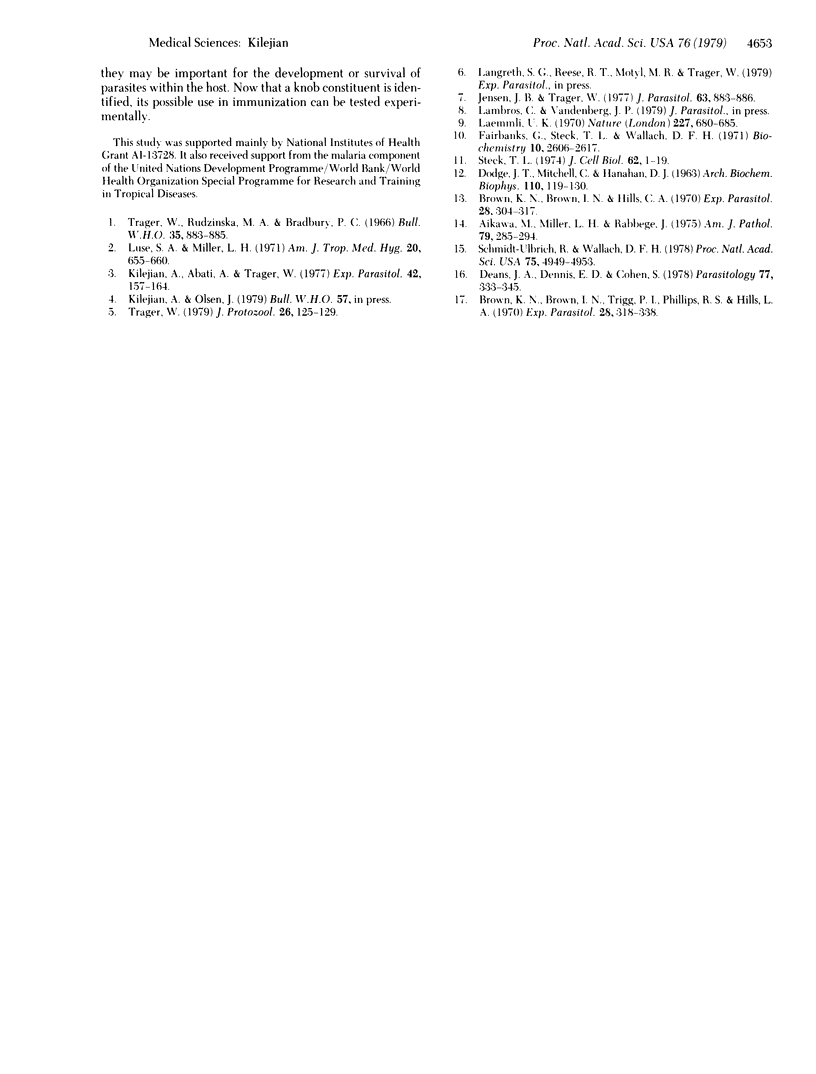
Images in this article
Selected References
These references are in PubMed. This may not be the complete list of references from this article.
- Brown K. N., Brown I. N., Hills L. A. Immunity to malaria. I. Protection against Plasmodium knowlesi shown by monkeys sensitized with drug-suppressed infections or by dead parasites in Freund's adjuvant. Exp Parasitol. 1970 Oct;28(2):304–317. doi: 10.1016/0014-4894(70)90101-3. [DOI] [PubMed] [Google Scholar]
- Brown K. N., Brown I. N., Trigg P. I., Phillips R. S., Hills L. A. Immunity to malaria. II. Serological response of monkeys sensitized by drug-suppressed infection or by dead parasitized cells in Freund's complete adjuvant. Exp Parasitol. 1970 Oct;28(2):318–338. doi: 10.1016/0014-4894(70)90102-5. [DOI] [PubMed] [Google Scholar]
- DODGE J. T., MITCHELL C., HANAHAN D. J. The preparation and chemical characteristics of hemoglobin-free ghosts of human erythrocytes. Arch Biochem Biophys. 1963 Jan;100:119–130. doi: 10.1016/0003-9861(63)90042-0. [DOI] [PubMed] [Google Scholar]
- Deans J. A., Dennis E. D., Cohen S. Antigenic analysis of sequential erythrocytic stages of Plasmodium knowlesi. Parasitology. 1978 Dec;77(3):333–344. doi: 10.1017/s0031182000050290. [DOI] [PubMed] [Google Scholar]
- Fairbanks G., Steck T. L., Wallach D. F. Electrophoretic analysis of the major polypeptides of the human erythrocyte membrane. Biochemistry. 1971 Jun 22;10(13):2606–2617. doi: 10.1021/bi00789a030. [DOI] [PubMed] [Google Scholar]
- Laemmli U. K. Cleavage of structural proteins during the assembly of the head of bacteriophage T4. Nature. 1970 Aug 15;227(5259):680–685. doi: 10.1038/227680a0. [DOI] [PubMed] [Google Scholar]
- Luse S. A., Miller L. H. Plasmodium falciparum malaria. Ultrastructure of parasitized erythrocytes in cardiac vessels. Am J Trop Med Hyg. 1971 Sep;20(5):655–660. [PubMed] [Google Scholar]
- Schmidt-Ullrich R., Wallach D. F. Plasmodium knowlesi-induced antigens in membranes of parasitized rhesus monkey erythrocytes. Proc Natl Acad Sci U S A. 1978 Oct;75(10):4949–4953. doi: 10.1073/pnas.75.10.4949. [DOI] [PMC free article] [PubMed] [Google Scholar]
- Steck T. L. The organization of proteins in the human red blood cell membrane. A review. J Cell Biol. 1974 Jul;62(1):1–19. doi: 10.1083/jcb.62.1.1. [DOI] [PMC free article] [PubMed] [Google Scholar]
- Trager W. Plasmodium falciparum in culture: improved continuous flow method. J Protozool. 1979 Feb;26(1):125–129. doi: 10.1111/j.1550-7408.1979.tb02747.x. [DOI] [PubMed] [Google Scholar]
- Trager W., Rudzinska M. A., Bradbury P. C. The fine structure of Plasmodium falciparum and its host erythrocytes in natural malarial infections in man. Bull World Health Organ. 1966;35(6):883–885. [PMC free article] [PubMed] [Google Scholar]



